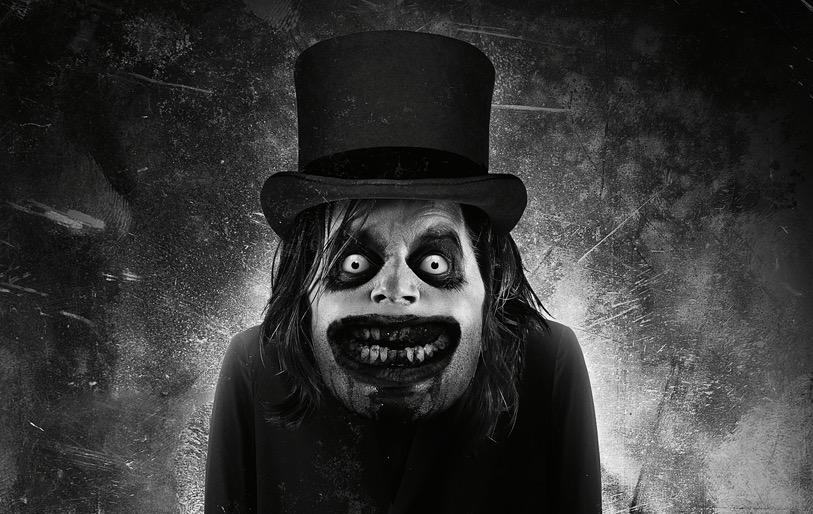The Dark Side of Anthropomorphism: Analyzing Characters in Horror

Anthropomorphism—the attribution of human traits, emotions, and intentions to non-human entities—has long been a powerful storytelling tool. While often used to create endearing characters in children’s literature and animation, its darker applications in horror are equally compelling. Horror filmmakers utilize anthropomorphic characters to evoke fear and discomfort, tapping into the uncanny valley where the familiar becomes unsettling. Let’s explore how horror movies and shows, such as Coraline and The Babadook, use anthropomorphism to amplify terror and reflect deeper psychological themes.
The Uncanny Valley: Where Familiarity Breeds Fear
The concept of the uncanny valley describes the eerie sensation experienced when something closely resembles a human but falls short of complete realism. Anthropomorphic characters in horror often inhabit this space, causing viewers to feel unease. They are familiar enough to evoke empathy or recognition, yet their deviations from normality render them disturbing.

In Coraline, the Other Mother serves as a prime example of this phenomenon. Initially appearing as a loving figure, she becomes increasingly menacing as her true nature is revealed. Her exaggerated features—button eyes, elongated limbs, and shifting facial expressions—underscore her unnaturalness, transforming her from a comforting presence into a source of dread. The anthropomorphism of the Other Mother, who takes the form of a motherly figure, plays on primal fears about parental relationships and the nature of love.
The Power of Transformation: Identity and Fear
Anthropomorphic characters in horror often embody themes of transformation, reflecting the fragility of identity and the potential for malevolence lurking beneath the surface. This transformation often serves as a metaphor for deeper psychological issues, tapping into fears related to control, autonomy, and the loss of self.

In The Babadook, the titular entity represents the protagonist’s grief and repressed emotions. The Babadook is not just a monster; it embodies the darkness within the main character, Amelia. As the creature takes on a more anthropomorphic form—a towering figure dressed in a top hat and coat—it becomes a manifestation of Amelia’s psychological struggle. The blending of the monstrous and the human raises questions about the nature of fear itself: What happens when our fears become personified? In this case, the Babadook’s haunting presence forces Amelia to confront her inner turmoil, illustrating how anthropomorphism can serve as a powerful narrative device in horror.
Childhood Fears and the Other Side of Innocence
Horror often explores the fears and anxieties that surface during childhood, and anthropomorphism plays a significant role in this exploration. Characters that appear friendly and innocent can quickly turn sinister, tapping into the vulnerabilities of childhood experiences and the loss of innocence.

Coraline masterfully illustrates this theme through the Other World, where the Other Mother and other anthropomorphized characters initially seem appealing. The world is vibrant and inviting, filled with quirky, animated figures. However, this illusion quickly unravels, revealing the sinister undercurrents that lie beneath. The anthropomorphized neighbours—each with exaggerated traits—serve to highlight the dangers of trusting appearances. The fear of the “other” is palpable, as children are often warned about the dangers of strangers. This narrative plays on the anxiety of being drawn to something that seems safe yet harbours dark intentions.
The Monster Within: Reflecting Human Nature
Horror films frequently explore the darker aspects of human nature, and anthropomorphic characters can serve as a mirror for our own fears and flaws. By humanizing monsters, filmmakers invite audiences to reflect on their own darkness and vulnerabilities.
In The Babadook, the creature’s anthropomorphic features—its tall, shadowy form and human-like gestures—force viewers to confront the emotions they may want to suppress. The Babadook’s very existence challenges the notion of control over one’s emotions, illustrating how repression can give rise to monstrous entities within ourselves. This approach underscores the idea that the real horror often lies not in external monsters, but in the internal struggles we face.
The Dual Nature of Anthropomorphism in Horror
Anthropomorphism in horror serves as a multifaceted tool, blending the familiar with the grotesque to elicit fear, discomfort, and introspection. Films like Coraline and The Babadook leverage anthropomorphic characters to delve into complex themes of identity, fear, and the loss of innocence. By transforming the mundane into the monstrous, these narratives challenge viewers to confront their own emotions, anxieties, and the darker sides of human nature.
Also Read: The Psychology of Dystopian Music: Why We Are Drawn to Darkness
As audiences engage with these characters, they are reminded that horror is not just about the external threats lurking in the shadows, but also the inner demons we must face. The dark side of anthropomorphism ultimately serves to enrich the horror genre, creating a chilling yet thought-provoking experience that lingers long after the credits roll.
–Silviya.Y








